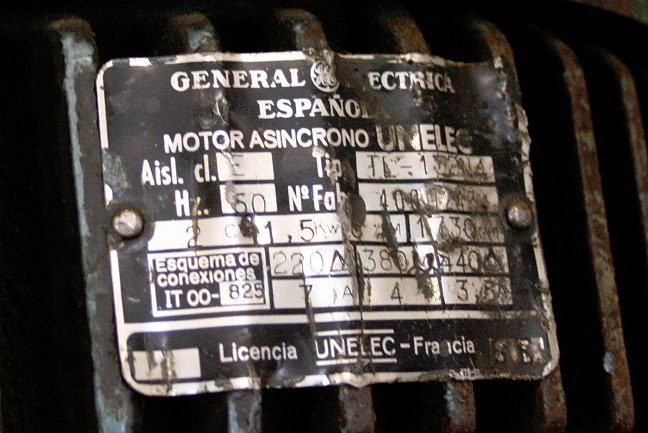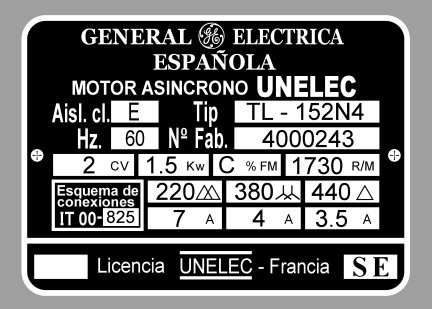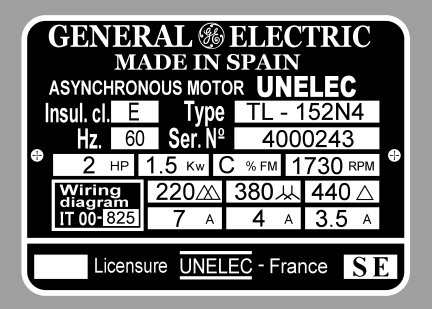DocsMachine
Titanium
- Joined
- Jan 8, 2005
- Location
- Southcentral, AK
I'm in the middle of refreshing an Anayak "Exacto" vertical mill, which was made in Spain. The motor dataplate was pretty rough when I first saw the machine, and thankfully I got a decent photos of it, as it was mangled badly during the process of moving the machine.
I have access to a shop that can reproduce a new printed metal tag, so I've whipped up some hopefully acceptable artwork for a replacement. The problem there is that a couple of the boxes are not easily readable, so I'm looking for some help in deciperhing.
Here's a reduced copy of the original dataplate:

If you'd like to see the full-size photo, click here.
And here's a reduced copy of the artwork for the new tag:

I think I have most of that correct, though I'm kind of guessing on the "fab number" and the various voltage wiring symbols.
What I can't even guess at is the tag to the right of the "KW" box, and the "Tip" number. (What's "Tip" mean, anyway? And for that matter, what's "Aisl. cl." mean?)
I'm also curious if anyone can tell me that the logo at the very bottom right is supposed to be.
And finally, here's the actual wiring of the motor:

I know that may not show enough detail, but can anyone hazard a guess as to which voltage it's wired for? And/or how I'd go about wiring it for 220v?
Thanks.
Doc.
I have access to a shop that can reproduce a new printed metal tag, so I've whipped up some hopefully acceptable artwork for a replacement. The problem there is that a couple of the boxes are not easily readable, so I'm looking for some help in deciperhing.

Here's a reduced copy of the original dataplate:

If you'd like to see the full-size photo, click here.
And here's a reduced copy of the artwork for the new tag:

I think I have most of that correct, though I'm kind of guessing on the "fab number" and the various voltage wiring symbols.
What I can't even guess at is the tag to the right of the "KW" box, and the "Tip" number. (What's "Tip" mean, anyway? And for that matter, what's "Aisl. cl." mean?)
I'm also curious if anyone can tell me that the logo at the very bottom right is supposed to be.
And finally, here's the actual wiring of the motor:

I know that may not show enough detail, but can anyone hazard a guess as to which voltage it's wired for? And/or how I'd go about wiring it for 220v?
Thanks.
Doc.



 ) and as humorous as those sorts of things might be, they wouldn't be much help to the next guy that needs to wire it, or even just determine the HP in order to buy the right size VFD.
) and as humorous as those sorts of things might be, they wouldn't be much help to the next guy that needs to wire it, or even just determine the HP in order to buy the right size VFD.